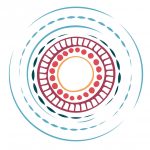Ngaa-bi-nya can be used throughout the evaluation process.

While scoping the evaluation, using Ngaa-bi-nya can help evaluators:
- to see the theory of change from the perspective of Aboriginal and Torres Strait Islander people
- to challenge the assumptions and highlight the breadth of contemporary and historical external factors in the program logic
- to think more clearly about the history of the policy or program which is being evaluated
- to think broadly about stakeholders and audiences
- to ask questions that are valued by Aboriginal and Torres Strait Islander people.
While defining the evaluation, using Ngaa-bi-nya can help evaluators:
- think about what success looks like to Aboriginal and Torres Strait Islander people
- think about what data needs to be collected
- choose the most appropriate methods of data collection
- consider the ethical implications of the evaluation more thoroughly.
While collecting and analysing data, using Ngaa-bi-nya can help evaluators:
- collect data that is important to Aboriginal and Torres Strait Islander people
- analyse it in ways that make sense to Aboriginal and Torres Strait Islander people
While reporting and transferring knowledge gained during the evaluation, using Ngaa-bi-nya can help evaluators:
- include in reports information that is valued by Aboriginal and Torres Strait Islander people
- consider who to tell about the evaluation and its findings, and how
- think broadly about the implications of the evaluation
- influence policies and programs affecting Aboriginal and Torres Strait Islander people.






